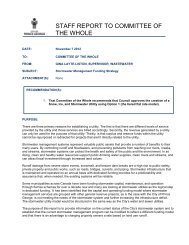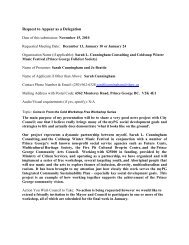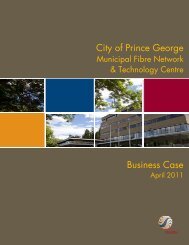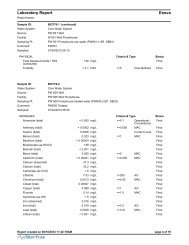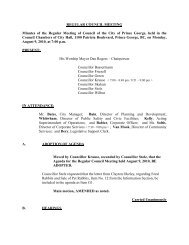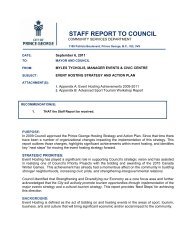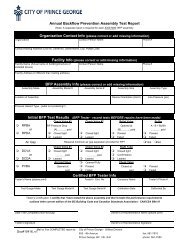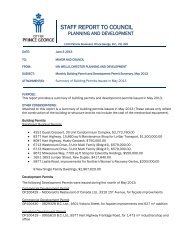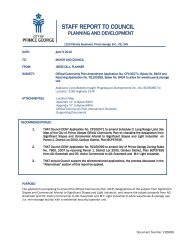Blackburn Wastewater Treatment Plant Upgrade Study
Blackburn Wastewater Treatment Plant Upgrade Study
Blackburn Wastewater Treatment Plant Upgrade Study
Create successful ePaper yourself
Turn your PDF publications into a flip-book with our unique Google optimized e-Paper software.
Section 4.0 - <strong>Blackburn</strong> <strong>Treatment</strong> Options<br />
the clarifier discharges directly to the river. The settled sludge is pumped back<br />
to the aeration basins at a rate approximately equal to the influent ADWF.<br />
Excess sludge is wasted from the return activated sludge and diverted to a vault<br />
where it is allowed to settle further. The supernatant from this vault is decanted<br />
back to the plant headworks. Thickened sludge is transported off-site for<br />
disposal.<br />
Non-nitrifying bioreactor<br />
HRT, h<br />
SRT, d<br />
Anoxic cells<br />
Volume (anoxic cell), m3<br />
Power (anoxic cell mixer)!hp<br />
Aerobic cells<br />
Volume (aerobic cell), m3<br />
Plan dimensions, m<br />
SWD,m<br />
MLSS, mglL 2,200<br />
Type of aeration<br />
Blowers<br />
Power (aeration blowers), hp<br />
fine bubble dif!%sers<br />
2<br />
40<br />
Mixers (aerobic cell)<br />
Power (aerobic cell mixers), hp<br />
Waste activated sludge storage<br />
Waste RAS (@ 8,000 ma), m3fd<br />
WAS storage capacity, d<br />
Volume (WAS tank), m3<br />
Plan dimensions, m<br />
SWD,m<br />
WAS tank aerator<br />
Power (tank aerator), hp<br />
Secondary Clarifiers<br />
Secondary clarification is required to remove the bulk of solids !?om the mixed<br />
liquor before final discharge, and to return the separated biological solids to the<br />
bioreactor. The secondary clarifiers will be sid to process 50 percent of<br />
ADWF each at a relatively low overflow rate, thereby allowing one to be taken




